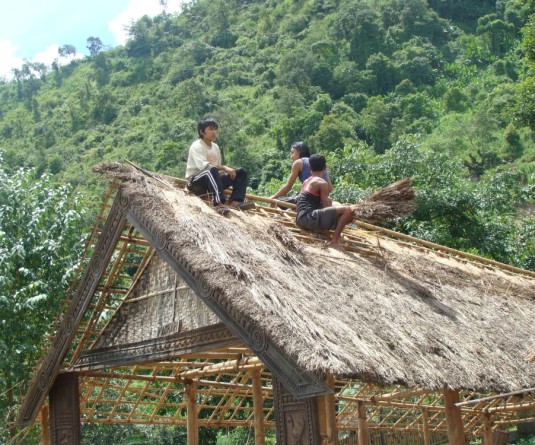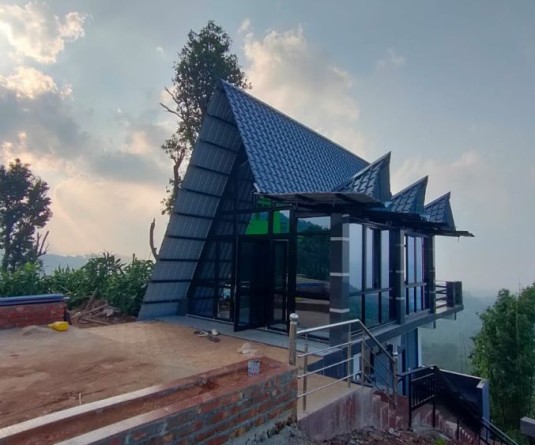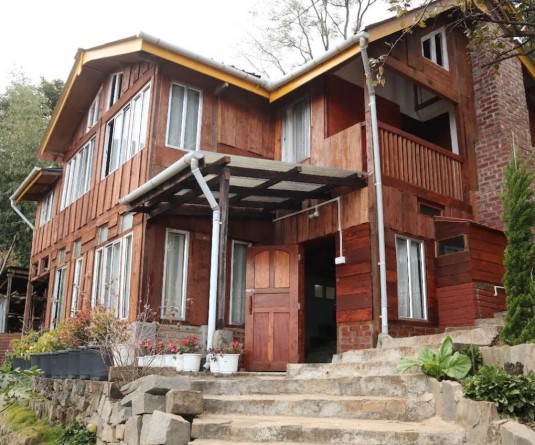Morung File Photo
 (2).jpg)
Imkong Walling
Dimapur | May 9
Nearly a week after the exasperating power outages begun, the public – helpless and equally frustrated - continue to suffer with no workable remedy in sight at the moment. Blame it on the reported damage incurred by the towers of the 400kv transmission line between Bongaigaon and Siliguri, or rather, is it the policy makers?
According to State Load Dispatch Centre, Nagarjan, as of Wednesday evening (peak hours), May 9, entire Nagaland was receiving a measly 49 megawatts (MW), which is subject to fluctuate on an hourly basis. This is in stark contrast to the actual requirement tipped at 110 MW at present. (Peak hours – said to be the period between 5:30 pm and 10:00 pm – is when energy consumption is at maximum on any given day.)
And whatever power that is received has to be shared among the four electrical divisions in the state, namely – Kohima Electrical Division, Dimapur Electrical Division, Mokokchung Electrical Division and Dimapur Transmission Division. It is then distributed depending on the connected load volume of each division. As of 6:30 pm of May 9, the two divisions of Dimapur were being allotted 20 MW, Kohima Division 12 MW and Mokokchung Division 10 MW. The requirement for Dimapur alone is said to be not less than 50 MW.
Under such a scenario, even the department is but helpless when successive governments over the years has failed, or rather overlooked the all too crucial energy sector in the state. Other than overtly ambitious hydro-based projects which are yet to see the light of day, the government has failed to look at cost-effective alternative sources of electrical energy. Nagaland, as is public knowledge, has in abundance rich reserves of high-grade coal.
Three hydro-based projects - Tizu-Zungki (150 MW), Dikhu (120 MW), and Yangyu (40 MW) - are reported as being under various stages of planning. Though destiny can only tell how long it will be before these projects become functional. Another venture, the pride of Nagaland, the 74-MW Doyang project is also yet to fully generate its estimated quota of power.
The energy problem of Nagaland is summed up in a report compiled by the department of Power dating back to the year 2005-006. A section of the report states, “Power generation being very negligible in the state (about one percent of the total requirement of power in the state), the major requirement (about 99 percent) is being met by purchasing power from the Central PSUs such as North Eastern Electric Power Corporation Ltd. (NEEPCO), National Hydroelectric Power Corporation Ltd. (NHPC) and Power Grid Corporation of India Ltd. (PGCL).”
Power Minister, Doshehe Y. Sema was queried on the current and long continuing energy crisis and remedies, if any. “Shortage of power is a global phenomenon. It is humanly impossible to provide uninterrupted supply of power to all,” Sema said speaking over the phone, Wednesday evening. Prodded further, he replied that one project in particular – the long awaited Dikhu project - is already in the planning stage. The DPR has been completed which require clearance from many agencies in Delhi, Sema said on the status of the project. He however declined to disclose the estimated cost of the project citing all details are with the companies in concern.
Aside from the big budget projects, the government has identified as many as 100 potential mini-hydro sites. However, it will be some more years before it actually reaches the construction stage. Queried on the prospects of coal based thermal plants in the near future, Sema replied that the government is assessing its potential keeping in mind the coal reserves of the state.
Coming to hydro-based energy, he begged to differ on the announcement of the Government of India terming the ‘north-east as a storehouse of electric energy’ with its rivers taken as potential source. “However the term ‘potentiality’ is not well defined,” he said. In the mainland, ‘potentiality’ would also mean the available infrastructure such as roads and transmission lines alongwith the project site itself. Whereas in the case of the NE region, the potential is measured only in terms of the available natural resource i.e. rivers sans the other infrastructural requirement, he explained of his argument. Unless the GoI redefine the term in context with the ground reality of the north-east, it will remain a distant dream. For, putting together the infrastructure required in accessing the identified site plus the eventual transmission alone will cost just as much as the project itself, if not more, he added.
There is no denying the potentialities of hydro-based projects. On the flipside, it has its own limits too, with rivers going dry in the lean season following the short monsoon. A concept note on ‘Nagaland Power Sector Reforms & Restructuring - the Joint Venture Route’ states that contrary to popular notion Nagaland has very limited water resources for power generation.






